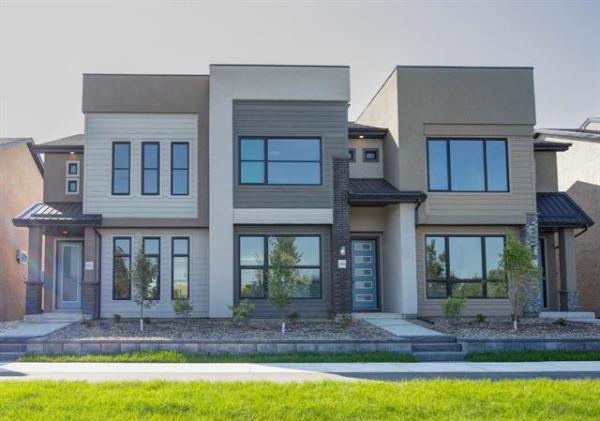You've probably had flyers in your mailbox about it, but like most people you've ignored them.
Maybe you've heard local government discussing it, but who listens to them anyway?
But every time your family can't swim at the beach on a hot summer day, you are reminded. Or if your drinking water has a funny smell or is cloudy after a big storm, you'll pay attention. And, if you've ever had to boil your tap water, or have had a sewer backup into your home, you'll never forget.
Stormwater is rainfall and melted snow that comes off roofs and driveways and roads and needs to go somewhere. It should seep back into the ground on lawns, gardens and green spaces. Ideally, we want surface water and stormwater to seep down in place to the aquifer or to recharge ground water.
The problem is that as we continue to develop areas for us to live, we are covering the earth -- that great big sponge -- with houses, pavement, sidewalks, parking lots and shopping malls. A huge percentage of the ground in developed areas is now non-permeable. This means rainwater can't seep down.
All the millions of litres of water that come down in precipitation has to go somewhere and, like good urban planners, we divert it. We create culverts and drains and sewers that lead to treatment plants or to our lakes, streams and oceans.
But this water can amount to a lot of excess water pressure on the municipal sewage system. In an intense thunderstorm, or period of extended heavy rainfall, a lot of damage can result -- flooding and sewage backups.
Waste water that you send down the drain is treated before it gets recycled into the lake or streams. Most stormwater runoff is not -- it's not filtered or treated at all. Because we've got to get rid of it quickly, it just gets rushed into our waterways and lakes. On the way it picks up all kinds of pollution: animal waste, automobile oil and grease, pollution, pesticides and herbicides that have a direct impact on local water quality.
So what can individual homeowners do to help take the pressure off municipal storm sewers?
The first thing to do is to make sure your downspouts aren't connected to the municipal sewage system. It used to be standard to do that, and in fact that 'excess' stormwater helped move the sewer system and keep it functioning. But disconnecting is becoming mandatory in many communities across the country, and even if it isn't yet in your area, you should do it. It's better to take the strain off the municipal storm drains.
You want to make sure your downspouts empty onto your own property, and as far away from your home's foundation as possible.
Collecting water in rain barrels or cisterns is helpful in two ways: Not only are you able to re-use that water for irrigation, storing it slows down the runoff. That way, not all the stormwater rushes into lakes and streams at once, with the increased risk of flood damage. Having a dry well or soakaway pit is a good idea too. Basically it's a buried drum filled with stones that rainwater can be fed into and slowly drain from.
Ideally you want to let the water percolate in place, being filtered naturally by plants and soil as it makes its way down to the aquifer. Design your landscape to have grassy swales to slow down and filter the runoff, or have a soakway to absorb the water. Remember ditches? Once every suburban driveway had a ditch and a culvert that slowed rainwater runoff. That was the norm -- now it's all sidewalks, curbs and gutters.
The first inch of rain that falls carries the largest percentage of pollutants in stormwater runoff. So, anything we can do to slow down that rush of water is good.
In the Lower Ninth Ward in New Orleans, we used rain boxes or mini rain gardens at intervals along the sidewalk, next to the storm drains. These were planted with native grasses to slow down and filter run off. Consider planting a rain garden that will temporarily hold that first inch of rainfall and filter out pollutants like pet waste, cigarette butts and car oil.
This isn't just an individual effort -- it's one communities should make with all new developments. Wind Walk -- the first Holmes Community-- is now being planned in Alberta. One of the most important elements in the development plan is stormwater management, along with on-site sewage treatment.
Wind Walk follows natural drainage patterns and allows ground water to be re-charged rather than leveling the ground and creating a blank slate, like many new developments. The goal of Wind Walk is to maintain the amount of water in the community at pre-development levels.
Wind Walk will incorporate large areas of natural landscape, swales, stormwater retention ponds-all of them are doing their part to manage and improve water quality. And at the back of every individual lot is a stormwater conveyance path -- a naturally planted swale -- that provides habitat and manages water onsite. I think it's a great model for every new community.
Catch Mike on Handyman Superstar Challenge airing Thursdays at 8pm ET/10pm PT on HGTV. For more information visitwww.hgtv.ca
For more information on home renovations go to makeitright.ca.



